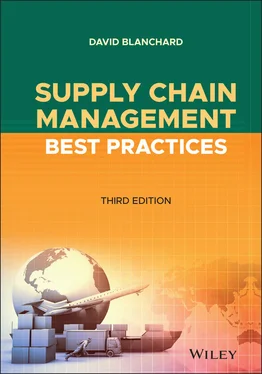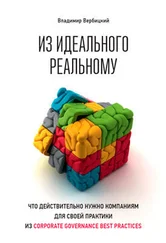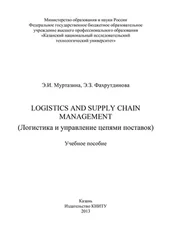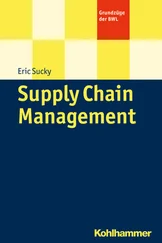The funny thing is, those kinds of faulty assumptions are made all the time about supply chains. For instance, since online retailer Amazon's supply chain is based on a model of guaranteed deliveries and free shipping, that's become the de facto model for all online retail companies, or for that matter, for any company in any industry . However, while Amazon can deploy its own warehouse robots and trucks to ensure your new desk lamp arrives by Thursday, ExxonMobil relies on an entirely different distribution network to move its products from pipeline to refinery to tanker to gas station. So, the idea that “one supply chain strategy fits all” is as wrong-headed as thinking that an elephant looks like a tree.
A supply chain , boiled down to its basic elements, is the sequence of events and processes that take a product from dirt to dirt, in some cases literally. It encompasses a series of activities that people have engaged in since the dawn of commerce. Consider the supply chain General Mills manages for every box of cornflakes it sells: A farmer plants a certain number of corn seeds, cultivates and harvests a crop, sells the corn to a processing facility, where it is baked into cornflakes, then is packaged, warehoused to a distributor, transported to a retail store, put on a store shelf, sold to a consumer, and ultimately eaten. If the cornflakes are not sold by the expiration date on the box, then they are removed from the retailer's shelf and disposed of.
A supply chain, in other words, extends from the original supplier or source (the farmer and the seed) to the ultimate customer (the consumer who eats the cornflakes). So whether you're talking about an Intel semiconductor that begins its life as a grain of sand or a Ford Explorer that ends its life in a junkyard where its remaining usable components (tires, seat belts, headlights) are sold as parts, everything that happens in between those “dirt-to-dirt” milestones encompasses some aspect of the supply chain.
APICS Supply Chain Council, an organization that develops industry benchmarks and metrics, came up with a way to summarize the concept of supply chain management in just six words: plan , source , make , deliver , return, and enable . 1 While it's difficult to find a consensus in any field, let alone a field that intersects with so many disparate disciplines, that six-word definition has been accepted as the basic description of what a supply chain looks like and what its core functions are. (The Supply Chain Operations Reference, or SCOR, model is discussed in Chapter 3.)
For those who like a little sizzle with their steak, another industry group, the Council of Supply Chain Management Professionals (CSCMP), is a bit more descriptive with its definition: “Supply chain management encompasses the planning and management of all activities involved in sourcing and procurement, conversion, and all logistics management activities.” That includes coordinating and collaborating with channel partners, including suppliers, intermediaries, third parties, and customers. In short: “Supply chain management integrates supply and demand management within and across companies.” 2
The Supply Chain's Back Story
As noted, the concept of working with suppliers and customers is as old as commerce itself, but the modern idea of a “supply chain” is fairly recent, probably dating back no further than the late 1950s to the pioneering research conducted by Jay Forrester and his colleagues at the Massachusetts Institute of Technology (MIT). A half century ago, Forrester began studying supply pipelines and channel interrelationships between suppliers and customers, and he identified a phenomenon that later came to be known as the bullwhip effect .
Forrester noticed that inventories in a company's pipeline (i.e., supply chain) tend to fluctuate the further they are from the ultimate end user. 3 The idea of the bullwhip effect remained largely a curiosity until the 1990s, when computers were fast enough, powerful enough, and affordable enough that researchers could not only gain an understanding of the bullwhip effect, but also design software programs that could circumvent it. Supply chain management as a discipline basically evolved out of Forrester's quest to understand and ultimately control these increases in demand fluctuations. Although he didn't use the exact words “supply chain” to describe his findings, “Forrester and his group should really get the credit for supply chain management,” asserts Edward Marien, long-time director of supply chain management programs (now retired) at the University of Wisconsin. 4
At some point in the early 1980s, the concepts of transportation, distribution, and materials management began to merge into a single, all-encompassing term: supply chain management . The term apparently first appeared in print in 1982 and has been attributed to Keith Oliver, a consultant with Booz Allen. In any event, in 1985, Harvard professor Michael Porter's influential book, Competitive Advantage , illustrated how a company could become more profitable by strategically analyzing the five primary processes on which its supply chain 5 framework is built:
1 Inbound logistics. These are the activities associated with receiving, storing, and disseminating inputs to the product (material handling, warehousing, inventory control, transportation scheduling, and returns to suppliers).
2 Operations. This refers to the activities associated with transforming inputs into the final product form (machining, packaging, assembly, equipment maintenance, testing, printing, and facility operations).
3 Outbound logistics. These are the activities associated with collecting, storing, and physically distributing the product to buyers (finished goods warehousing, material handling, freight delivery, order processing, and scheduling).
4 Sales and marketing. Within a supply chain context, these are the activities that induce buyers to purchase a product and enable them to buy it (advertising, promotions, sales force, quoting, channel selection, channel relations, and pricing).
5 Service. This refers to the activities associated with providing service to enhance or maintain the value of the product (installation, repair, training, parts supply, and product adjustment). 6
Like Forrester before him, Porter saw that companies could significantly improve their operations by focusing on interrelationships among business units. These interrelationships, he wrote, are “tangible opportunities to reduce costs or enhance differentiation in virtually any activity in the value chain. Moreover, the pursuit of interrelationships by some competitors is compelling others to follow suit or risk losing their competitive position.” As a result, according to Porter, it is critically important for companies to focus on horizontal strategy—a coordinated set of goals and policies across distinct but interrelated business units. This horizontal strategy, which is a succinct way of describing supply chain management, represents the essence of corporate strategy. 7
Although their work was separated by more than two decades, both Forrester and Porter saw that a vertical strategy—the idea of compartmentalizing every department and group into unconnected silos—was counterproductive to a company's long-term growth and health. Curiously, more than three decades after Porter's work, companies are still trying to figure out how to get their managers to cooperate across departments and functions, share resources, and cross-sell products to promote the entire company's bottom line. 8
The terms may change throughout the years, but the underlying goal of supply chain management has remained constant:
Читать дальше












